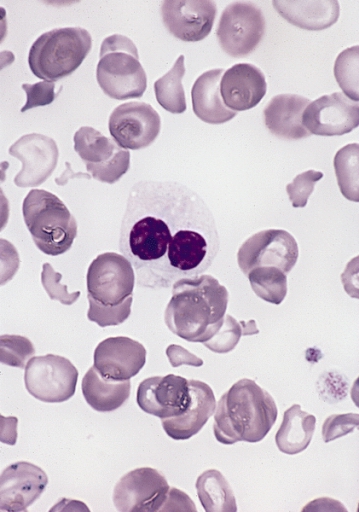MDS is a blood disorder that is more common in older populations. Approximately 10,000 to 12,000 people in the United States are diagnosed each year.
Myelodysplastic Syndrome (MDS)
The word myelodysplastic comes from two Latin words meaning blood and malformed or misshapen. It is an apt name because MDS is a group of diseases that affect the body’s ability to produce healthy blood and normal-shaped blood cells.
In order to function, the human body needs a certain amount of healthy blood cells. If a person cannot produce enough of them, or if they are deformed in some way, that person will become ill and in more severe cases, possibly even die as a result. Blood itself has several essential components, and each one has a critical role to play within the body. Red blood cells, for instance, carry oxygen to the cell. Platelets control clotting, and white blood cells fight infections. Blood cells are produced deep inside of the bones, in spongy tissue called marrow. MDS attacks the bone marrow and short-circuits the process of blood production.
The Name No One Knows
Many people have never even heard of MDS (Myelodysplastic Disorders). Which is not surprising given the fact that until 2001, even the Center for Disease Control did not track it or know exactly how many patients had been diagnosed with the disorder. In many ways, MDS remains an enigma.
MDS in Older Adults
While the disease itself is not yet that well understood, progress is being made and new treatments are being used to manage the symptoms. Some things are certain though, for instance, researchers now know that it occurs more often in men than women and that older populations are much more at risk than younger groups (the average age at diagnosis is around 71). In fact, almost 80% of those affected by the disease are over the age of 60. Smokers have a higher-risk level than non-smokers and rheumatic diseases (such as arthritis-more common in the elderly) is a recognized risk factor. A previous exposure to certain chemicals or chemotherapy also increase the likelihood of MDS.
No one is exactly certain as to what triggers the disorder or why it targets older patients. The symptoms and severity can vary widely as well. It can arise abruptly or it may develop slowly over time. Symptoms can be mild and highly treatable, or it can be more aggressive and even fatal. MDS can also turn into a form of leukemia (a blood cancer) known as acute myeloid leukemia that has a high mortality rate.
What to Look For
Bear in mind that some patients may have few or no symptoms. Many patients are actually diagnosed when they get routine blood work done, which furthers the case for routine exams on a regular basis.
Signs and Symptoms of MDS
- Easy bruising or excessive bleeding
- Fatigue
- Frequent infections
- Anemia
- Paler skin than normal
- Flat pinpoint red spots on the skin (caused by bleeding)
- Shortness of breath
There is no cure for MDS, but early detection can go a long way in improving the odds of a long and healthier life. If you are a loved one begins to have any of the following signs or symptoms, do not put it off. Make an appointment to visit your medical provider immediately.
References for What is MDS? Why is MDS in Older Adults More Common?:
Aplastic Anemia & MDS International Foundation. “ Myelodysplastic Syndrome (MDS”. Retrieved on November 21, 2013 from http://www.aamds.org/node/59
Patient Co. UK Doctor “Myelodysplastic Syndromes”. Retrieved on November 22, 2013 from http://www.patient.co.uk/doctor/Myelodysplastic-syndromes-%28MDS%29.htm

